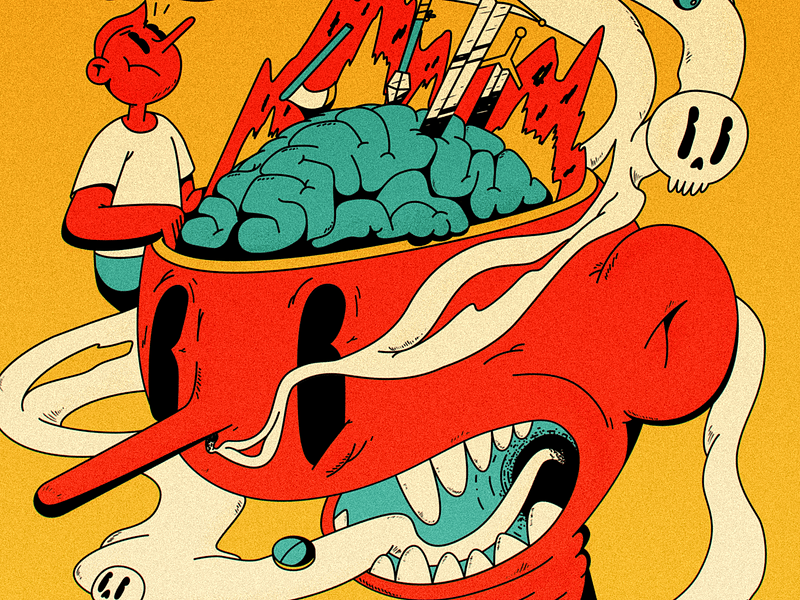Exploring the Fascination of Unified Cognition and Its Implications
Written on
Chapter 1: The Allure of Joint Cognition
The ideas surrounding joint cognition and brain concepts have captivated me since I first encountered them. Here, I’ll delve into this intriguing subject.

If you're a fan of the Marvel Cinematic Universe (MCU) like I am, you're likely familiar with Ultron — a sophisticated artificial intelligence that inadvertently gains control over countless computers globally. At first glance, this may not seem particularly formidable. However, let's explore this further. We are all surrounded by various digital devices, often carrying them with us, using them for entertainment, and increasingly blurring the lines between our digital and physical realities. This is where Ultron's true power lies. The prevalence of digital devices means that even the most basic technologies, like traffic lights, contain microprocessors.
In the film I referenced, all these devices converge under a collective cognition called Ultron, which turns against humanity. This illustrates the gravity of the situation: eliminating your computer only removes a fragment of Ultron, making it nearly impossible to combat this pervasive joint cognition, as it is omnipresent and constantly observing our actions.
Section 1.1: Another Perspective
If you watch the film I mentioned, you’ll understand the monumental implications of having a collective brain. However, there’s another concept similar to Ultron, yet even more powerful. Instead of a single brain uniting various bodies (or devices), imagine all these entities connected under a cognition that synthesizes every individual thought and idea into one comprehensive framework. Here are a few examples that highlight the effectiveness of collective cognition among individuals.
Subsection 1.1.1: The Candy Jar Experiment
A few years back, a teenager filled a jar with 941 M&M candies and roamed the streets asking people to guess how many candies were inside. He didn’t use any measuring tools; participants simply shared the first number that came to mind, which he diligently noted down.

Knowing myself, I expected people would struggle to estimate quantities accurately. I thought the guesses would widely diverge from the actual number. To my surprise, most estimates were indeed far-fetched. How could someone suggest there were 11,523 candies in a small jar?
Despite this, when the teenager calculated the average of all the guesses, the result was astonishingly close to the actual count: 934, with less than a 1% error margin. How could this happen amidst all the erroneous guesses?
The explanation lies in human psychology. When prompted for a number, individuals typically strive to provide a reasonable estimate. The outlandish guesses ultimately balance each other out. In a crowd, there tends to be an overestimation that counters underestimations, leading to a more accurate average.
This realization led me to seek further examples where collective cognition yields outcomes superior to individual input.
Section 1.2: The Harmony of Concert Audiences
I enjoy attending concerts and singing along with the crowd; it’s always an uplifting experience. However, I often find that everyone shares my enthusiasm, resulting in a cacophony rather than harmonious music. Yet, there's something fascinating about the collective sound of the audience. Despite the chaos, the group's voice tends to be in tune and melodious. This phenomenon occurs for the same reason: as individual voices are averaged, their impact on the overall sound diminishes, resulting in a more desirable auditory experience.
Chapter 2: The Long-Recognized Power of Unified Cognition
Although the concept of collective cognition may seem novel, it has been acknowledged by humanity for centuries. For instance, democracy was established in the fifth century B.C. in Greece, where it was recognized that collective decision-making often yields more accurate results than relying on individual judgment.
Is It Possible to Achieve True Unified Cognition?
While it may appear that we are far from achieving true unified cognition, advancements like Elon Musk’s Neuralink mark significant progress. I believe that genuine unified cognition will manifest when we can disentangle our thoughts from our physical forms, possibly through digital uploads. While this may evoke visions of a dystopian future dominated by machines, I see it differently. Achieving this separation could liberate our minds from the constraints of our physical bodies. Our aspirations and thoughts typically exceed our physical limitations—hence, they are termed "dreams." With liberation from temporal and spatial constraints, pure cognition could interconnect and harmonize with other cognitions in the most profound manner.
Conclusion
In summary, the principle is straightforward: while individuals can make erroneous decisions or take misguided actions, collective input often leads to the most accurate and favorable results. Essentially, together we are stronger.

The first video discusses the challenges faced by Ultimate players and how they navigate the complexities of teamwork and strategy.
The second video serves as a guide on how to play Ultimate Frisbee, offering tips and insights into the game's fundamentals.